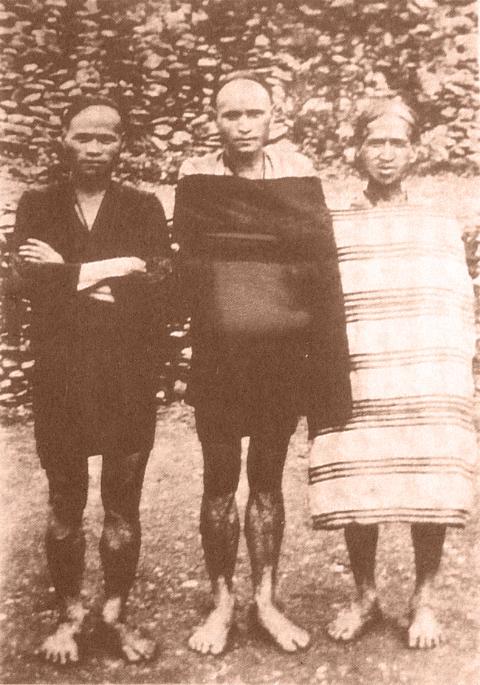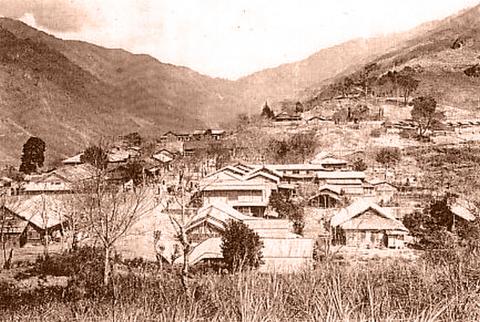Oct.24 to Oct. 30
In August of 1911, various Aboriginal Sediq chiefs from the Wushe (霧社) area, including Mona Rudao, were taken on a one-month trip to Japan, where their colonial masters made a display of power by having them tour various major cities and military facilities.
By then, the Sediq tribes in Wushe had already suffered much since the Japanese entered their lands in 1906. One of the major conflicts, writes Dakis Pawan in his book The Truth Behind the Sediq and the Wushe Incident (又見真相: 賽德克族與霧社事件), was the confiscation of all rifles during the first phase of the occupation, which were crucial to the Aboriginal hunting way of life.

Photo courtesy of Wikimedia Commons
“They killed every person who refused to hand in their rifles … they treated us like animals,” Takun Walis, a descendant of Wushe villagers states in the book, noting that by 1912 the population in Wushe had been reduced by half.
He adds that this was one of the factors that led to Mona Rudao’s planning of the Oct. 27, 1930 uprising, now known as the Wushe Incident (霧社事件), where hundreds of Sediq warriors descended on an athletic meet on at the local elementary school and killed 134 Japanese.
While Japanese official records point to direct causes such as police misconduct and even cite the inherent savage nature of the Aborigines, Dakis Pawan writes that resentment had been brewing for decades and the incident could have happened much earlier if not for the chiefs, who “did everything they could to prevent the young tribal members from killing Japanese.”

Photo courtesy of Wikimedia Commons
“The [tour of Japan] did achieve a certain amount of success, because when the chiefs came back, they all agreed that ‘Japan has an enormous population with a strong military force,’” Dakis Pawan writes.
THE JAPANESE SIDE
Historian Leo Ching analyzes the official Japanese version of what caused the incident in his book, Becoming Japanese: Colonial Taiwan and the Politics of Identity Formation, using an official Japanese report of the incident published in 1934.
The common version of the event points to a confrontation between Mona Rudao’s son and a Japanese police officer as the trigger. A brawl ensued and the officer was beaten. The tribe’s later apology to the officer was not accepted, and rather than wait for official punishment, Mona Rudao called for the surprise attack.
Ching notes that the role of the policeman in Aboriginal society during the Japanese colonial era was very different from that of Han Chinese areas. There was a much higher concentration of officers in the Aboriginal areas, whose role was to “instill awe and dread of imperial authority.”
Other police functions that Ching cites include maintaining order and discipline, playing the role of teacher, doctor and general counsel as well as reporting census information such as births and deaths, and even climate and logging activities to the colonial government.
In a general sense, the report blames the inherent nature of Aborigines, citing their “natural propensity for violence,” “lack of guilt-consciousness” toward headhunting as well as their innate “infantilism, stupidity and stubbornness” and “ignorance of civility.”
Regarding the direct motives, the report attributed Mona Rudao’s actions to the failed marriage between his sister and a Japanese officer, and his son Bassao Mona’s to a marriage dispute where he had to carry out a headhunting ritual to demonstrate his bravery. It also discusses Aboriginal fears of reprisal for the police officer’s beating, and delves into police misconduct and Aboriginal discontent over construction projects on their land, low and delayed wages and other forms of mistreatment.
The report concludes by directly linking Aboriginal resentment to the construction and labor issues and the agitation of a few “rebellious savages.”
“By characterizing the incident as a circumstantial and personal effort, the colonial officials aimed to deflect any interrogation and criticism of colonial authority itself,” Ching writes.
YEARS OF RESENTMENT
But for the Sediq, it goes way deeper. Dakis Pawan writes that after killing many men and disarming the population, the Japanese “turned to high-pressure and unreasonable administration, aggressively building construction projects while disregarding our traditional ways of life and forced our people to work like horses.” They also abused the village women, and would burn down the houses of noncompliant villagers, killing their entire families.
It should be noted that the Japanese version of events stated “low and delayed” wages while Dakis Pawan’s account states that they were not paid at all. And as the Japanese account stated, there were issues with the policemen marrying Aboriginal women and then abandoning them.
Finally, Dakis Pawan states that “everything the Japanese did violated our gaya,” which roughly means the cultural, social and moral way of life that each Sediq member was strictly bound to.
“Because the protection of the tribe and our traditional areas is the basis of the perpetuation of gaya, just the fact that the Japanese occupied our lands was enough for my ancestors to use gaya to punish the invaders.”
“It’s hard for me to imagine that my ancestors would rather die in glory and use such measures against the Japanese, but at the same time I am not surprised,” he concludes.
This is the first of a two-part series commemorating the anniversary of the Wushe Incident. Next Sunday, Taiwan in Time will be looking at the aftermath of the incident as well as the shift in Japanese colonial policy toward Aborigines.
Taiwan in Time, a column about Taiwan’s history that is published every Sunday, spotlights important or interesting events around the nation that have anniversaries this week.

On April 26, The Lancet published a letter from two doctors at Taichung-based China Medical University Hospital (CMUH) warning that “Taiwan’s Health Care System is on the Brink of Collapse.” The authors said that “Years of policy inaction and mismanagement of resources have led to the National Health Insurance system operating under unsustainable conditions.” The pushback was immediate. Errors in the paper were quickly identified and publicized, to discredit the authors (the hospital apologized). CNA reported that CMUH said the letter described Taiwan in 2021 as having 62 nurses per 10,000 people, when the correct number was 78 nurses per 10,000

As we live longer, our risk of cognitive impairment is increasing. How can we delay the onset of symptoms? Do we have to give up every indulgence or can small changes make a difference? We asked neurologists for tips on how to keep our brains healthy for life. TAKE CARE OF YOUR HEALTH “All of the sensible things that apply to bodily health apply to brain health,” says Suzanne O’Sullivan, a consultant in neurology at the National Hospital for Neurology and Neurosurgery in London, and the author of The Age of Diagnosis. “When you’re 20, you can get away with absolute

May 5 to May 11 What started out as friction between Taiwanese students at Taichung First High School and a Japanese head cook escalated dramatically over the first two weeks of May 1927. It began on April 30 when the cook’s wife knew that lotus starch used in that night’s dinner had rat feces in it, but failed to inform staff until the meal was already prepared. The students believed that her silence was intentional, and filed a complaint. The school’s Japanese administrators sided with the cook’s family, dismissing the students as troublemakers and clamping down on their freedoms — with

As Donald Trump’s executive order in March led to the shuttering of Voice of America (VOA) — the global broadcaster whose roots date back to the fight against Nazi propaganda — he quickly attracted support from figures not used to aligning themselves with any US administration. Trump had ordered the US Agency for Global Media, the federal agency that funds VOA and other groups promoting independent journalism overseas, to be “eliminated to the maximum extent consistent with applicable law.” The decision suddenly halted programming in 49 languages to more than 425 million people. In Moscow, Margarita Simonyan, the hardline editor-in-chief of the